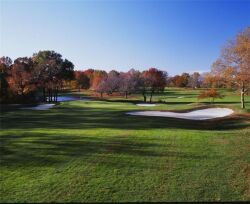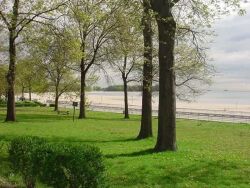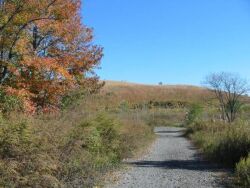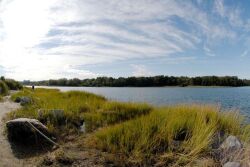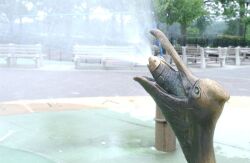Pelham Bay Park
Rodman’s Neck
The peninsula of Rodman’s Neck is located south of Orchard Beach between Eastchester Bay and City Island.
The peninsula of Rodman’s Neck is located south of Orchard Beach between Eastchester Bay and City Island.
Rodman’s Neck bears the name of its former landowner, Samuel Rodman (1715-1780). Rodman was born on February 6, 1715 to Joseph Rodman and Sarah Lawrence of New Rochelle. He married Mary Hicks on October 13, 1737, and they had seven children. Mary Hicks died on December 20, 1751, and Rodman then married Mary Pell, daughter of Caleb Pell. Rodman was once the sole owner of Hart Island and City Island, and he played a role in setting up a ferry between City Island and Rodman’s Neck in 1763. Samuel Rodman died in 1780.
Rodman’s Neck has also been called Anne’s Hoeck, for Anne Hutchinson (1591-1643), the early American voice for religious freedom, and Pell’s Neck, Pelham Point, and Pell’s Point, for Thomas Pell (1613-1669). Pell was the original landowner of the Pelham Manor that once included the eastern half of the Bronx and Westchester. In the Battle of Pell’s Point on October 18, 1776, Colonel John Glover (1732-1787) successfully safeguarded General George Washington’s (1732-1799) retreat to White Plains by intercepting a large British force here and inflicting significant casualties with his small band of Patriots.
L.R. Marshall built a Southern-style mansion at the northern border of Rodman’s Neck on his “Hawkswood” estate. The house was converted and used as an inn until 1888, when Parks acquired the property for Pelham Bay Park. Parks opened Rodman’s Neck to the public in 1903 with bathhouses, picnic tables, and cooking facilities. During World War I (1914-1918) the United States Navy used the site as a training facility. In the 1920s Rodman’s Neck was used once again for park purposes.
The shape of Rodman’s Neck changed substantially when Parks Commissioner Robert Moses (1888-1981) constructed Orchard Beach in 1936. Moses’ ambitious $8 million plan to join Rodman’s Neck and Hunter Island added 115 new acres of land, using over 3 million cubic yards of sanitation landfill. Construction crews added white sand from the Rockaways in Queens and from Sandy Hook, New Jersey to the beach at a rate of 4,000 cubic yards a day. Between 1930 and 1936 the southern tip of the peninsula was used by the New York City Police Academy for summer training, and in 1950, the United States Army drained the site and built barracks. When the Army finished using the land, the site was turned over to the New York City Police Academy, which established a permanent training facility and firing range in 1960.
Check out your park's Vital Signs
Clean & Safe
Green & Resilient
Empowered & Engaged Users
Share your feedback or learn more about how this park is part of a
Vital Park System

Know Before You Go

Contacts
Pelham Bay Park Administrator's Office: (718) 430-1891
Bartow-Pell Mansion Museum: (718) 885-1461
Park Enforcement Patrol: (718) 430-1815
Pelham Bay & Split Rock Golf Course: (718) 885-1258
Turtle Cove Driving Range: (718) 885-2646
Orchard Beach Nature Center: (718) 885-3466
Urban Park Rangers: (718) 548-0912
Events and General Parks Information: 311
Bronx Equestrian Center: (718) 885-0551
Friends of Pelham Bay Park: (718) 430-4685
Bronx Recreation: General Information: (718) 430-1825
Bronx Recreation: Special Events Permits: (718) 430-1848
Bronx Recreation: Sports Permits: (718) 430-1840
Bronx Recreation: Tennis Permits: (718) 430-1848

